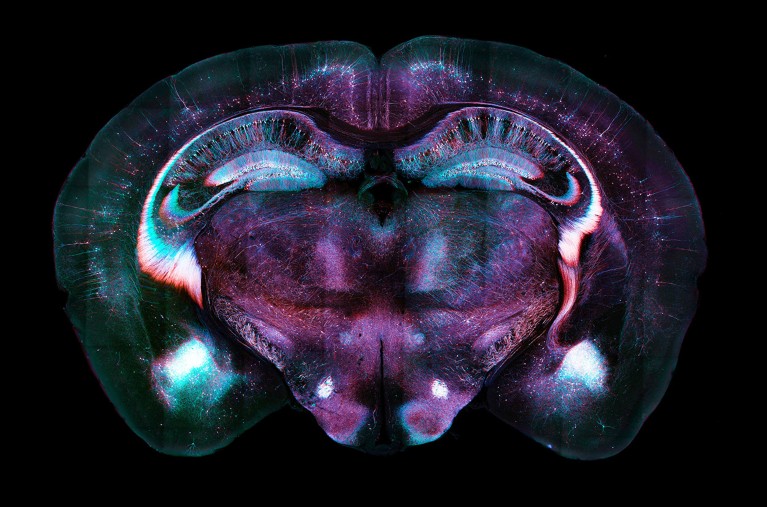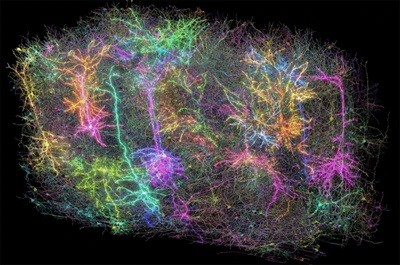
A section through a mouse brain showing neuron cells labelled with fluorescent proteins.Credit: Arthur Chien/Science Photo Library
Neuroscientists have identified a brain signal in mice that kick-starts the process of overwriting fearful memories once danger is passed — a process known as fear extinction.
The research is at an early stage, but could aid the development of drugs to treat conditions, such as post-traumatic stress disorder (PTSD), that are linked to distressing past experiences.
In a study published on 28 April in the Proceedings of the National Academy of Sciences USA1, the researchers focused on two populations of neurons in a part of the brain called the basolateral amygdala (BLA). These two types of neuron have contrasting effects: one stimulates and the other suppresses fear responses, says co-author Michele Pignatelli, a neuroscientist at Massachusetts Institute of Technology in Cambridge.
Until now, scientists didn’t know what activated these neurons during fear extinction, although previous research implicated the neurotransmitter dopamine, released by a specific group of neurons in another part of the brain called the ventral tegmental area (VTA).
Biggest brain map ever details huge number of neurons and their activity



